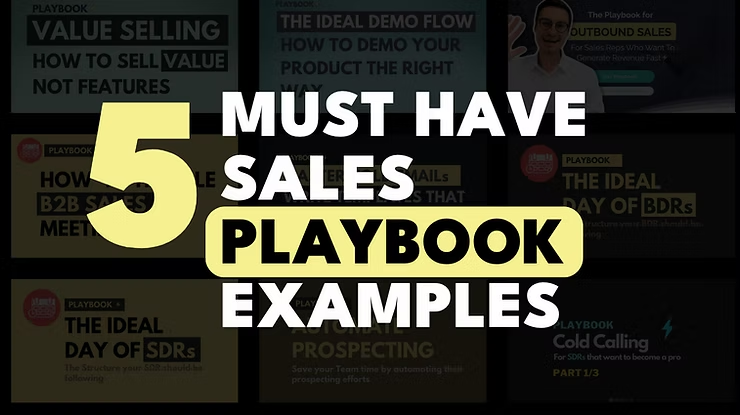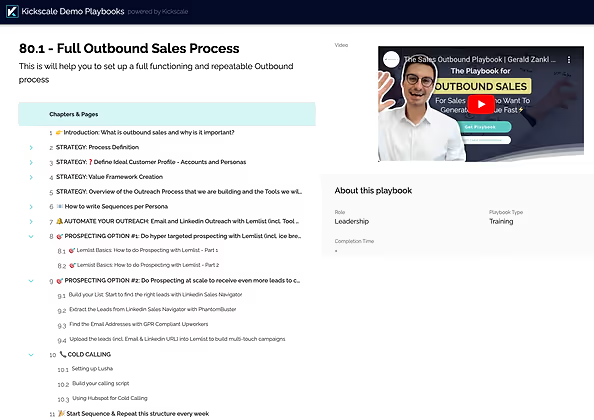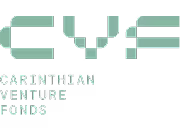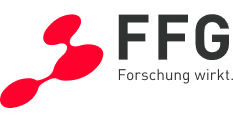5 Must Have Sales Playbook Examples

Today we are going to share with you templates of the most essential playbooks. Sales teams that don't have access to these playbooks shoot into the dark.
Feel free to grab our templates and adjust them to your needs!
Sales Playbook Example #1: Ideal Customer Profile, Target Accounts, Buyer Personas
As you can imagine, not knowing who to target is a risk. The ideal customer profile is essential and the names says it already... it is the perfect customer that you can get. When you jump on a call with them, chances are high that they have the pains that you are trying to solve.
Out of that you will need to build a target account list for your sales team and the buyer personas within these accounts.
This includes identifying their demographics, behaviors, motivations, challenges, and pain points.
Having a well-defined buyer persona and ideal customer profile helps a sales team to focus their efforts on the most promising leads and tailor their approach to meet the specific needs and preferences of those leads. This can increase the likelihood of closing deals and improve the overall efficiency of the sales process.
Access & Use Playbook Template 👇

Sales Playbook Example #2: Value Framework (Value for Customer)
What value do you sell? What benefits can you deliver to the customer with your product or service? and how does it help solve their problems or meet their needs.
Have you been in demo calls where someone tried to sell you something & they just threw features at you? That's not a good experience right?
The best sellers don't sell features, they sell value. Value that the feature can deliver.So in this Playbook you will need to mention key features and benefits of the product or service. You can usually calculate the potential return on investment for the customer or time savings, etc.
Having a well-defined value framework in a sales playbook will help your sales team to effectively communicate the value of the product or service to your customer.
It also helps the sales team to better understand the customer's needs and preferences, and tailor their approach to meet those needs.
By highlighting the specific benefits that the customer can expect to receive from the product or service, a sales team can increase the likelihood of closing deals and building long-term customer relationships.
Oh and did you know that new starters at AHrefs don't start in the position they got hired for? They start in customer support so that they start to understand the customer before they go into their official roles.
Access & Use Playbook Template 👇

Sales Playbook Example #3: Revenue - Sales- Inbound Process
If you have a bigger sales team or want to hire more sales people then you need a functioning sales process in place.You will otherwise get a circus instead of a professional sales team.
The revenue and sales process describe the steps that a prospect goes through from the initial contact with a salesperson to becoming a paying customer.
Here are some of the stages that potential customers go through: lead generation, qualification, discovery, proposal, negotiation, and close.
But there is more to it. What are the team roles & responsibilities, what their weekly goals and expectations, who is doing inbound (focusing on the incoming requests), who is doing outbound (focusing on new potential buyers)?
A well established revenue and sales process in a sales playbook will build consistency and discipline through your entire sales team. You will see.. this will have a huge impact on your revenue.
It also provides a framework for measuring progress and identifying areas for improvement.
Access & Use Playbook Template 👇

Sales Playbook Example #4: Outbound Process
You want new customers fast? Inbound takes too long? Then you will need to start building a functioning outbound process.
The outbound process is a strategy for reaching out to potential customers who have not yet expressed interest in the product or service being sold.
You are going out and hunting for new prospects.
Here are some initiatives this includes: cold calling, email outreach, and direct mail campaigns.
Having a well-defined outbound process in a sales playbook helps a sales team to effectively target potential customers, generate new leads, and expand their customer base.
Doing Outbound is hard... but is it really?
Access & Use Playbook Template 👇

Sales Playbook Example #5: The Ideal Day of A Sales & Business Development Rep
Starting new in sales is hard. Especially if no one shows you the ideal processes. If you want to get your team quickly effective then you will need to provide them with expectations of their ideal day.
The ideal day of an SDR & BDR outlines a daily schedule that will maximizes productivity and efficiency of your junior sales reps.
How many activities per day? when & how to do prospecting? when to reach out? when to do cold calling, social media engagement, and research?
Having a well-defined ideal day for an SDR & BDR in a sales playbook helps your team that they are focused on high-value activities and are using their time effectively.
An SDR should spend as much time on incoming leads as possible while a BDR should focus their time on reaching out to new potential clients.
You will see, this playbook will maximizing productivity and efficiency, an SDR & BDR can generate a larger volume of leads and opportunities, which will increase the chances of closing deals and driving revenue for the business.
Access & Use Playbook Template 👇

Want to build your own playbooks? Here are some templates and resources that might be helpful.
FAQs

This is some text inside of a div block.

This is some text inside of a div block.

This is some text inside of a div block.

This is some text inside of a div block.

This is some text inside of a div block.


Your sales team deserves clarity instead of guessing games
With our AI revenue intelligence platform, we help innovative sales teams make better decisions and close more deals. Experience the difference:
Deep customer understanding
Identify why customers buy or what prevents them from doing so – from all conversations
Objective forecasts
Finally make decisions based on hard facts instead of gut feeling
Deal prioritization
Focus your team on the opportunities with the highest potential











.avif)









